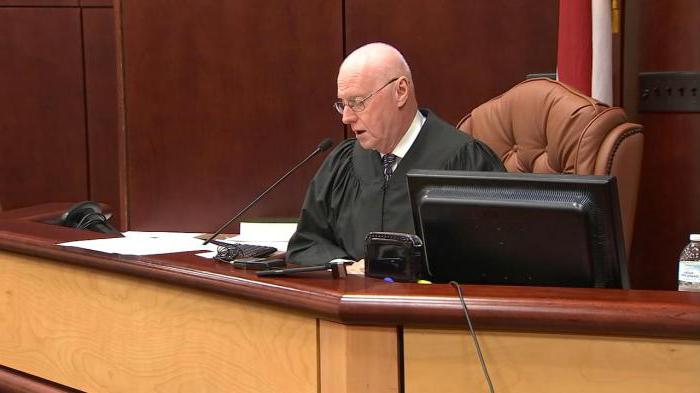Business fragmentation is used to reduce the tax burden on the enterprise. This is achieved by special modes. It all starts with the transfer of the company to a simplified scheme - USN.

How it works?
The fragmentation of business in the simplified tax system is as follows: one company is divided into several small ones. Since the total profit received by the legal entity is shared with this, each newly formed company receives not very large revenue. This allows the application of simplifications of the simplified tax system to it, which reduces the tax burden on the owner of organizations.
STS is a preferential opportunity to pay taxes that applies only to a small business.
Is it practical to split up a business? Judicial practice of recent years shows that entrepreneurs are increasingly being punished for such a separation of the company, which does not have real business goals and is organized only for the avoidance of taxes.
For example
Suppose that there is a plant that produces a product on a relatively large scale. If its owner organizes business splitting, tax evasion will result in the fact that each newly formed legal entity will be taxed according to a simplified scheme. For example, each of the workshops that were previously part of the plant may become new enterprises.

The risks of splitting a business in this way are quite high. This involves both the illegality of the practice, the likelihood of prosecution, and economic difficulties. Entrepreneurs often lose much more from such reforms than they get.
Arbitrage practice
It provokes the fragmentation of the business litigation if the enterprise was divided into several small ones, after which a tax audit came, and the head could not prove to the representatives of the inspection what goals he pursued. Ten years ago, legal proceedings on this issue were protracted and ended in favor of legal entities, but today the situation has changed: it will be very difficult to win a court.
Why are judges so critical when there are signs of business fragmentation? According to current laws, in Russia it is possible to carry out entrepreneurial activity, if the legislation does not prohibit this area. You can also create several companies. At the same time, production operations should be considered when evaluating their economic meaning and causes. If inspectors and judges find a discrepancy, they will have to prove for a long time that they are wrong, because the practice of taxation calls unjustified profit-making to split up a business and avoid tax.

Unfair Crushing: Symptoms
Most often, attention is paid to the following aspects:
- the event was held without a real need for it, and the created companies are engaged in the same activity;
- all companies are located in one place;
- firms do not have their own vehicles, storage areas and equipment;
- the management team is the same for all companies;
- start-up company can conduct business independently;
- documents are formalized;
- newly formed firms do not tolerate production costs, do not have their own website and other individual characteristics.
Is crushing a business hopeless? Judicial practice (taxes, as we recall, are the primary reason for it) shows that with sufficient persistence you can prove your position and justify the division of the company, but for this you need to formulate a business goal, such that the judge believes.
Business goal: what are
So that tax splitting of business does not constitute a violation and does not start a lawsuit, inspectors should discern one of the following:
- Despite the coincidence of the management structure of the company, they conduct independent activities, the production process does not allow them to be combined into one person and suspect division only for the purpose of avoiding taxes.
- Taxpayers dispose of property owned by the company, and its volumes are sufficient for activities in accordance with the Charter. But the administrative building can be used together under such conditions.
Crushing scheme: important features
According to the laws in force in Russia, you can create subsidiaries, establish an unlimited number of enterprises. The tax service exercises control over all operating and newly formed enterprises in order to identify which of them were created to disaggregate the company, and do not have a different purpose.

The first such practice was officially registered back in 2003. This is due to the introduction of simplified taxation schemes at that time, which not only the legal entities for whom these programs were launched were quick to take advantage of, but also all the businessmen who did not want to miss the benefit.
Or maybe it doesn’t work?
Business splitting (UTII) allows you to access good benefits, since initially this tax payment system was developed for small businesses, that is, those enterprises that are under very heavy tax burden and few could survive without preferences by the state.
Large, medium-sized enterprises, appreciating the attractiveness of the new tax system, artificially began to penetrate into it, which led to numerous inconveniences. In particular, as it turned out, managing a large number of small companies is more difficult and less efficient than one large one. As a result, the practice led to losses both for owners (profit decreased) and for the state (taxes to the budget were reduced). Despite this, to this day the scheme has attracted the attention of dishonest legal entities. Moreover, it is predicted that the economic crisis will provoke even those companies that previously conducted their business strictly according to the law on such frauds.
Crushing and goals: try, prove!
When a company is reorganized or a new legal entity is registered, the head of the company has the right to choose a tax regime that will (in his opinion) be most beneficial for the company. At the same time, the existence of a business goal is a critical indicator: if there is none, functioning under the law is prohibited. That is, the business goals of splitting up a business cannot consist only in reducing the tax burden on the budget of the company.
But in order to prove that the creation of new legal entities makes sense, we can give a risk analysis with an indicative conclusion: the formation of a new company reduces the risks to business. The goals justified by law also include:
- features of activities that force the opening of new organizations;
- territorial remoteness;
- industry specifics.
The tax factor is taken into account in court, but as an additional one. If he comes to first place, we can assume that the case is lost.

The nuances of the question
Suppose that a company that has decided to disaggregate has some business purpose from those listed above. In this case, it would seem that the tax authorities will not have questions for her. But there is a subtle point: the business goal can be compromised.
This happens in a situation when a business is divided into several legal entities at the moment of reaching the border value for the simplified taxation system.Roughly speaking, if a judge suspects that the fragmentation of the UTII business is primarily provoked by the fact that the company is close to the threshold when this scheme is closed to her, then no other goals - favorable and worthy - may not impress.
It is difficult for a legal entity in the current judicial practice to prove that the reorganization accidentally occurred at the moment when critical indicators were achieved. You can try, but a lot will depend on the judge's vision of the situation.
Business Crushing and Resources
If the optimization of the enterprise was carried out contrary to the laws in force, this can be recognized not only for business purposes, or rather, their absence. The company's resources also clearly demonstrate that “business is unclean”. The full range is considered, that is:
- informational;
- financial;
- organizational;
- material;
- staff.
If business splitting was aimed at avoiding taxes, then all of them after reorganization for new enterprises will be common. Differentiation leads to costs, so businessmen, whenever possible, evaluate the interests of the complex as a whole, that is, they use resources jointly for all new legal entities that work independently on securities.

Tax authorities, however, are not blind: they visually inspect production areas, conduct interviews with employees of new companies, and analyze open data for each organization. All this helps to draw the right conclusions: whether there was a disaggregation to reduce the tax burden or the operation was carried out “for real”.
Equipment, inventories
Logistics is an important element of any production process. If the business fragmentation pursued illegal goals, the MTO base will immediately show this: it can be seen what is called the “naked eye”. In particular, the new companies will use the same warehouses, workshops, which have not introduced a system for differentiating goods. If we are talking about retail space, the halls will belong to all legal entities at the same time. Coincide office space, other tangible assets.
The judge does not always consider suspicious property transactions as serious evidence, but investigators pay a lot of attention to this factor. You can rest assured that a mention of such fraud will surely be heard in court. In some cases, court findings are based primarily on data on how newly-formed companies apply MTOs.
Human resources
If an entrepreneur decides to start a business split, he should pay special attention to the staff. Do not hesitate, tax auditors will definitely devote enough time to this.

It is generally accepted that the pursuit of illegal goals during the splitting of companies is associated with the preservation of former employees who are transferred to new places or arrange part-time jobs. But before making a final decision, the court will analyze the employment relations in the previous firm and the new ones, which will make it possible to talk about evidence in the case. If additional revealing factors are found, then the personnel policy will definitely become evidence taken into account in the case.
Cash resources
Perhaps, money manipulation is one of the most significant factors in identifying business fragmentation in order to avoid taxes. They always leave traces: operations are registered in various systems, which allows you to keep the situation under control.
The following facts indicate the dishonest intentions of the taxpayer:
- Newly formed legal entities have accounts in the same financial structure (although this indicator is usually insignificant);
- money is observed with one taxpayer;
- other companies associated with the original large organization do not receive real money.
From this, the judge can already conclude that a number of legal entities are not self-sufficient, from which it follows that their creation was provoked by an unwillingness to pay taxes in full.
As it was in practice
One rather interesting judicial precedent was that financial frauds turned out to be in the spotlight. The company has established cooperation with an individual entrepreneur who worked on UTII. According to the concluded contracts of instruction, the legal entity successfully evaded taxes for a rather long time.
The benefit was that the IP was (albeit informally) under the control of a larger company. The court revealed this on indirect grounds. In addition, human resources for enterprises were common, the same software was used, that is, the accounting for goods sold in stores of legal entities was similar. The suppliers were the same.
A fictitious document flow created by entrepreneurial persons allowed the IP only to imitate the activities regulated by the contract of assignment. In practice, the sale of goods was the task of a larger company, and the revenue was divided so as to minimize the tax burden. In this case, the court decided in favor of the tax authority.

Management resources
Even if several organizations have independence only formally, their workflow is still fraught with certain financial costs. Minimizing such entrepreneurs are trying to achieve, leading management to a single center. Of course, this reduces costs to some extent, but also helps tax authorities discover an illegal scheme.
What does it look like in practice? The inspection inspection comes to the company’s office, examines the documentation stored there and suddenly discovers a “misunderstanding”: for some reason, the accounting records of a completely different legal entity are stored in the same office. This, of course, causes a wave of questions, and even if there were no “punctures” under other articles, the company is now in the focus of attention. This may seem ridiculous, but such “misunderstandings” have been repeatedly recorded in judicial practice.

Signs of General Management
There are several common characteristics that are characteristic of companies with a single control center. Usually match:
- legal address;
- book of complaints;
- signboard;
- promotional system, discounts on positions sold;
- a computer on which accounting is maintained for several legal entities;
- method of obtaining guidance from management personnel.
To prove that the companies are interconnected and there was a fragmentation of the business with the aim of tax evasion, analyze the flow of information. It is usually revealed that all suspects have the same:
- reference;
- telephone number;
- IP address
- information base.

Affiliation
In the process of identifying the relationship between legal entities, tax inspectors first of all try to determine the person who receives the most benefit from the established business process. Recently, judicial practice has shown that interconnectedness is considered as one of the main signs that business is fragmented under the simplified tax system with the goal of avoiding taxes. Affiliation allows you to identify the relationship between two legal entities or a large number.
Typically, interconnectedness is provoked by the fact that the inclusion of a third party in a business structure can lead to large losses. Therefore, it is common to involve relatives, friends, companions - in a word, persons with whom there are fairly close ties. Kinship, subordination, and doing business together are vivid indicators of affiliation.
They try to avoid such accusations by attracting dummies. However, in practice, this leads only to more serious consequences.When a connection between the participants is discovered, in itself it is not a basis for confidently saying that the tax benefit so achieved is illegal. But if the court discovers a nominee leader, the decision will certainly not be in favor of the entrepreneur. For this, a large-scale audit of the activities of a person suspected of having only nominally managed the company is carried out. They identify the place of work, study, residence, interview employees, determine from whom the instructions in the company come from, who is engaged in hiring.